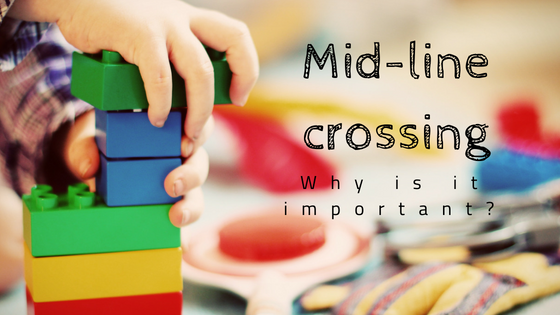
What is mid-line crossing?
Crossing the mid-line means that one hand spontaneously moves over to the other side of the body to work there. Before this ability is established, a young child tends to use the left hand on the left side of the body and the right hand on the right hand side of the body.
Mid-line crossing emerges as a child develops bilateral co-ordination skills. As the child learns to co-ordinate a strong hand which is doing something skilled (eg. cutting) and and assistant hand which is helping (eg. holding the paper), the ability to spontaneously cross the mid-line develops.
Why is mid-line crossing so important?
When a child spontaneously crosses the mid-line with the dominant hand, then the dominant hand is going to get the practice that it needs to develop good fine motor skills.
If a child avoids crossing the mid-line, then both hands will tend to get equal practice at developing skills, and the child's true handedness may be apparently delayed.
In order for a child to excel at learning to write, there has to be a dominant, strong hand that becomes specialised at doing the job of controlling the pencil.
If both hands are being used, the child may well end up with two mediocre hands rather than one strong one - and mediocre hands do not produce great handwriting!
NOW READ: Why Crossing the midline activities helped this child listen to his teacher
Want to improve your child's mid-line skills? Check out these products
